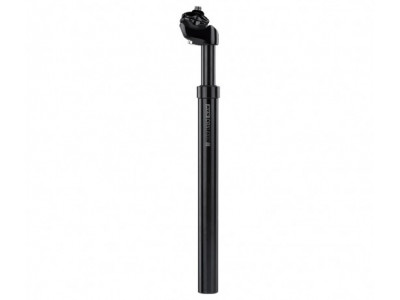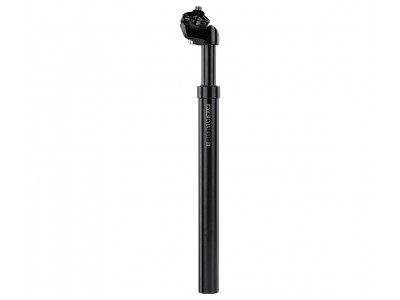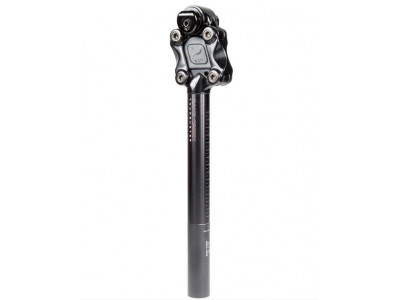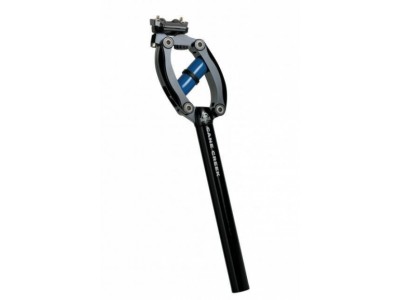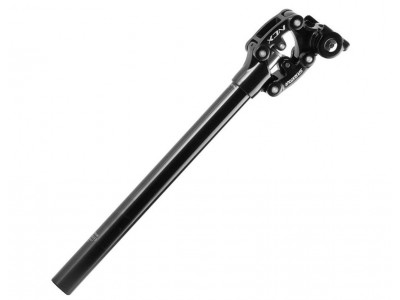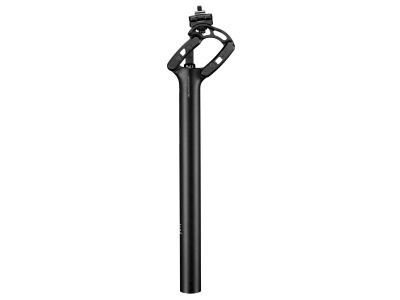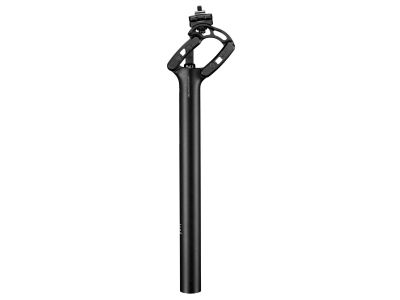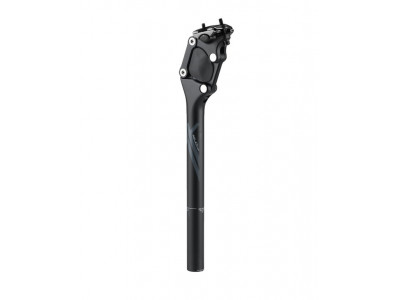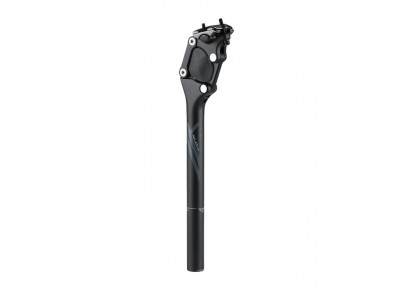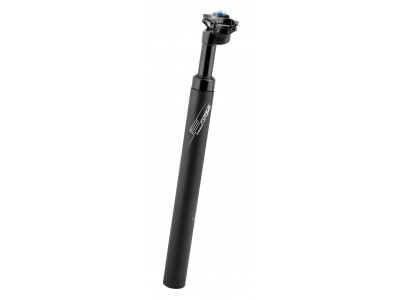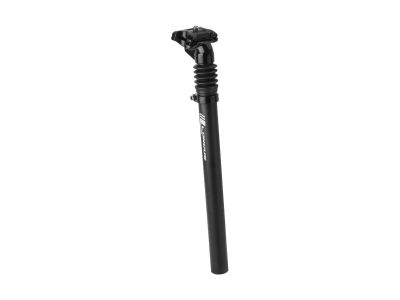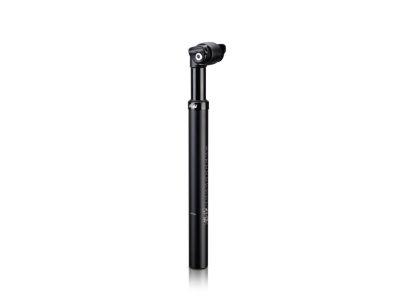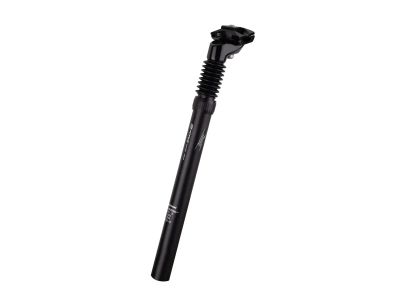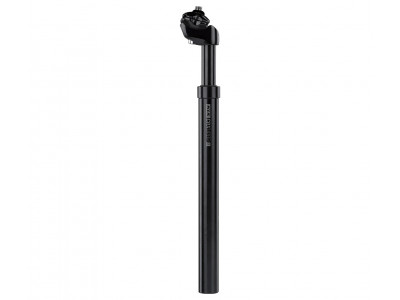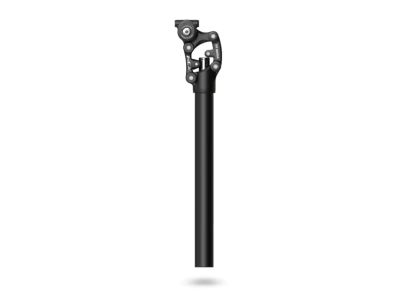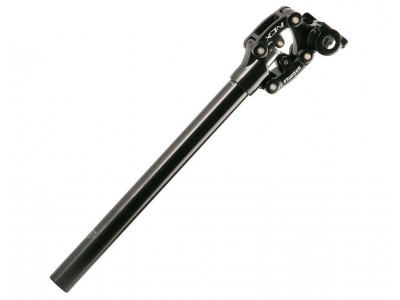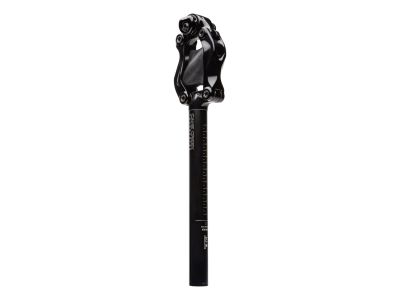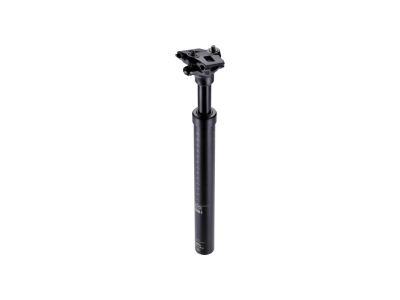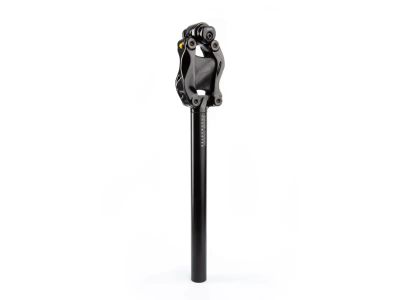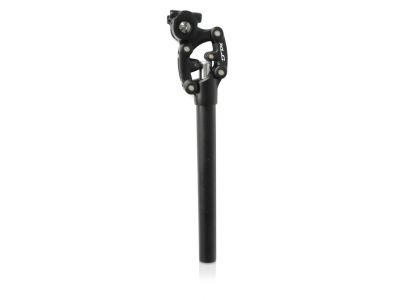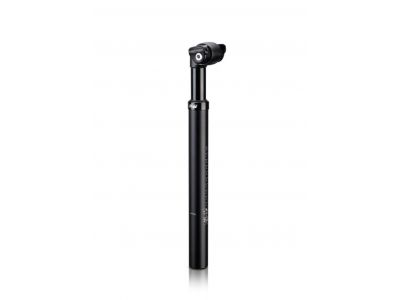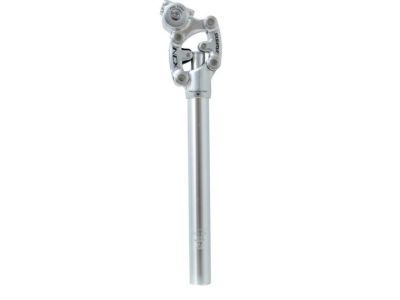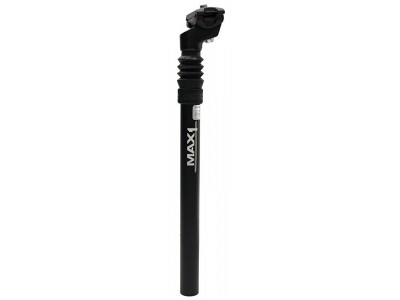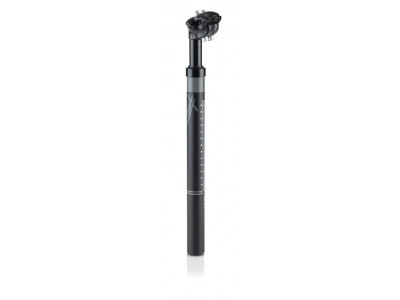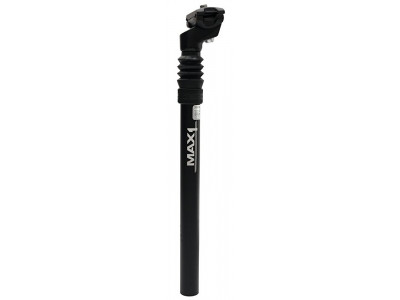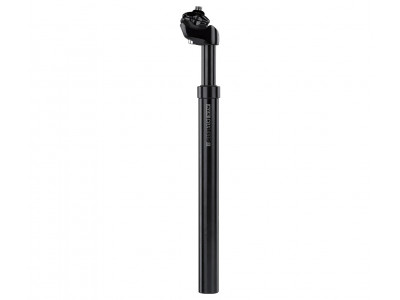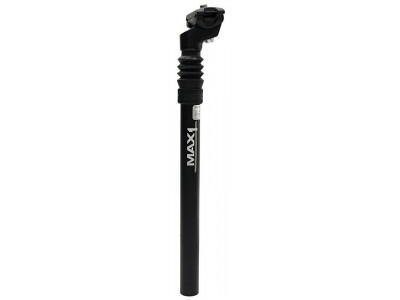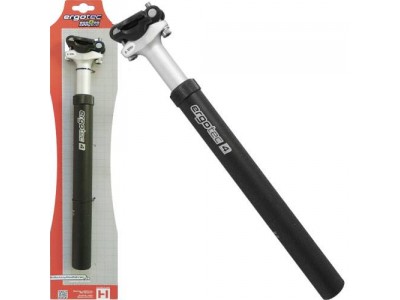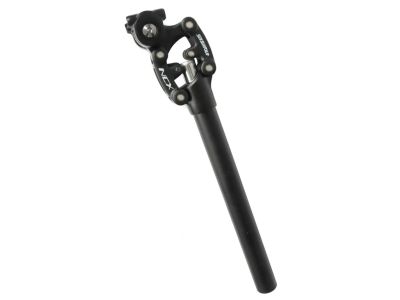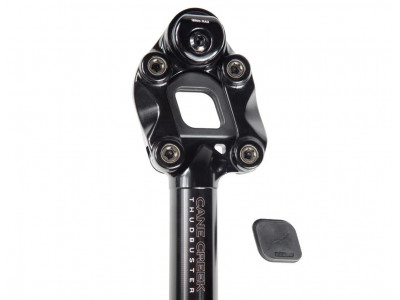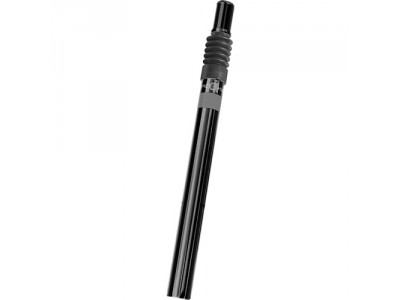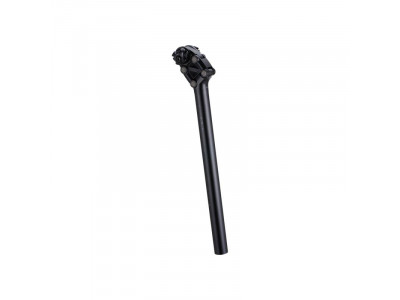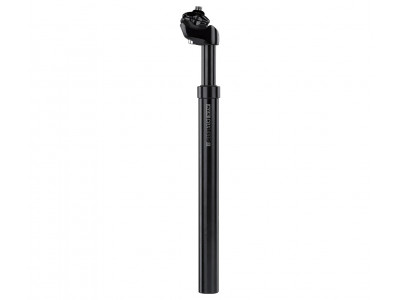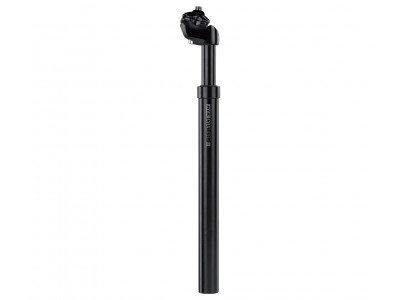Suspension seat post is a specialized component designed to increase comfort when riding a bicycle. This innovative device absorbs shocks and vibrations, contributing to a smoother ride, especially on uneven terrain. When choosing the right suspension seat post, you need to consider various factors that correspond to your riding style, preferences, and the type of terrain you are on. Here is a short guide to help you choose:
- Travel: Travel refers to the distance the seat post can be compressed to provide shock absorption. More travel is generally suitable for rougher terrain.
- Compatibility: Measure your bike's seat tube diameter to ensure compatibility with a suspension seat post. Most suspension seat posts come in standard diameters of 30.9 mm, 31.6 mm or 27.2 mm, so pick one that fits your bike. Make sure the seat post is compatible with your saddle.
- Material: Suspension seat posts are often made of materials such as steel, aluminium, or carbon. Steel seat posts have a higher resistance, but also a higher weight and are among the cheaper ones. Aluminium offers a good weight-to-strength ratio and is affordable, while carbon is lighter but tends to be more expensive. Choose according to your budget and weight preferences.
- Adjustability: Suspension seat posts provide adjustability for hardness or rebound/compression. These settings will allow you to precisely tune the suspension according to your weight, driving style and terrain conditions.
- Load capacity: Different seat posts have different weight limits, so select the one that suits your needs.
By considering these factors, you can choose a suspension seat post that fits your riding preferences, bike specifications and budget.
How do suspension seat posts work?
The suspension seat post is designed to absorb bumps while riding. It consists of several components that together ensure effective suspension:
When riding over bumps in the terrain, the suspension seat post compresses and absorbs shock, allowing the rider to maintain better control of the bike and reduce the impact on their body. The suspension seat post helps reduce fatigue and increase comfort during long rides on uneven surfaces.
Does investing in a suspension seat post make sense?
Whether investing in a suspension seat post is worth it depends on your riding style and the terrain you ride. Here are some considerations to help you make your purchase decision:
By considering these factors, you can select a suspension seat post that fits your riding preferences, bike specifications and budget.
- Seat tube: The main tube that connects the seat to the bike frame. It is usually made of aluminium or carbon fibre and is designed to absorb shocks.
- Suspension mechanism: Located inside the seat tube and is responsible for dampening shocks and vibrations. There are various types of suspension mechanisms including coil springs, elastomers, air springs or a combination of these.
- Coil springs: Metal springs that compress and expand to absorb shock. They are adjustable, allowing riders to tailor the suspension to their weight and riding preferences.
- Elastomers: Rubber-like materials that provide a cushioning effect. Their disadvantage is that they cannot be adjusted.
- Air springs: Compressed air is used for suspension. They offer the possibility of adjusting the suspension by regulating the air pressure inside the seat post.
- Preload adjustment: Many suspension seat posts have a preload adjustment feature. Preload adjustment allows riders to adjust the initial tension or stiffness of the suspension. By adjusting the preload, riders can fine-tune the suspension to suit their weight and riding style.
- Travel: For suspension seat posts, the travel figure refers to the length of vertical movement they provide. It determines how much impact and vibration the seat post can absorb. Travel may vary by seat post model and brand.
- Riding style: If you often ride on rough or uneven terrain, such as trails or gravel roads, a suspension seat post can provide significant comfort by absorbing shock and vibration. It can help reduce fatigue and improve handling, especially during longer rides. If you mostly ride on smooth roads or well-paved surfaces, a suspension seat post may not be so necessary. Roads in light terrain may not be a reason to purchase an additional suspension seat post.
- Comfort: If you experience discomfort or pain in your lower back or buttocks while cycling, a suspension seat post can help relieve some pressure and ensure a smoother ride. It can be particularly beneficial for riders who have pre-existing spinal or joint problems.
- Weight: Suspension seat posts increase the weight of the bike. If you care about the total weight of the bike, especially for racing bikes, you can prefer a lighter seat post without suspension.
- Price: Suspension seat posts can be more expensive compared to standard fixed seat posts. Consider your budget and how much you're willing to invest in cycling comfort.
